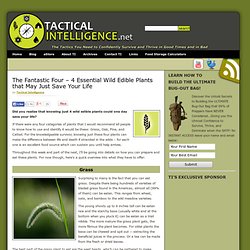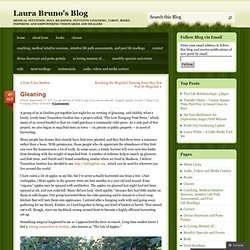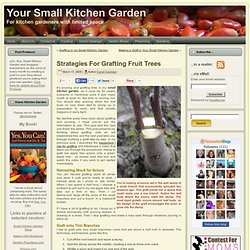

Dandelion has unsuspected health benefits such as inhibiting cancer cell growth. (NaturalNews) So many people can't wait to get rid of them once they start growing on their lawn, since dandelions are often seen as unwelcome weeds.

Some of you may also recall the Rolling Stones song named "Dandelion" that came out during the summer of 1967. It was possibly the last time that dandelion was truly put into the spotlight, but new hope has now emerged that could very well make it the most wanted weed around. The dandelion greens are closely related to the sunflower plant family, which includes over 22 000 other plant species, such as thistles and daisies.
This herb had a much better reputation in the old days, regarded by most as a formidable healer. How to eat wild stuff and not get poisoned (how-to) Let's play pretend for a moment.

Are you with me? Let's pretend you can't go down to the supermarket for food to eat. In fact, let's pretend that there is not a supermarket for one hundred miles in any direction, and you don't have any food with you. The Fantastic Four – 4 Essential Wild Edible Plants that May Just Save Your Life. Did you realize that knowing just 4 wild edible plants could one day save your life?

If there were any four categories of plants that I would recommend all people to know how to use and identify it would be these: Grass, Oak, Pine, and Cattail. For the knowledgeable survivor, knowing just these four plants can make the difference between life and death if stranded in the wilds – for each one is an excellent food source which can sustain you until help arrives. Why Eat Wild Herbs and Edible Plants? The Benefits of Wild Edible Plants For hundreds of years people took advantage of the medicine cabinet at their doorstep.

Before the advent of processed foods and modern convenience stores, wild plants were a common dietary supplement. They were the ultimate natural multivitamin! Often the plants we call weeds have therapeutic value. What is the universal edibility test?" Getting lost or stranded in the wilderness is serious business, and you need to make sound decisions to give yourself the best chance at survival.

It also helps to know some basic wilderness survival skills. To make sure you're safe from the elements, you'll need to know how to build a shelter. To provide you with an opportunity to cook food, boil water and send a rescue signal, you should learn how to build a fire without a match or lighter. The other crucial component to survival is finding water in the wild. People can live without food for up to a month, but water is necessary to keep us alive. But just because you can live without food doesn't mean you should. Foraging: 52 Wild Plants You Can Eat. Here are a few common North American goodies that are safe to eat if you find yourself stuck in the wild: Blackberries: Many wild berries are not safe to eat, it’s best to stay away from them.

But wild blackberries are 100% safe to eat and easy to recognize. They have red branches that have long thorns similar to a rose, the green leaves are wide and jagged. They are best to find in the spring when their white flowers bloom, they are clustered all around the bush and their flowers have 5 points. Dandelions: The easiest to recognize is the dandelion, in the spring they show their bright yellow buds. Asparagus: The vegetable that makes your pee smell funny grows in the wild in most of Europe and parts of North Africa, West Asia, and North America. Elderberries: An elderberry shrub can grow easily grow about 10 feet and yield tons of food, their leaf structure is usually 7 main leaves on a long stretched out stem, the leaves are long and round and the leaves themselves have jagged edges.
Poisonist and non-poisonist plants in Indiana. US Wildflower's Database of Wildflowers for Indiana. Rainbow Bright. Gleaning. A group of us in Goshen got together last night for an evening of gleaning, and ohhhh, what a lovely, lovely time!

Transition Goshen has a project called, “The Low Hanging Fruit Press,” which many of us crowd funded so that we could purchase a community cider press. As a side part of this project, we also began to map fruit trees in town — on private or public property — in need of harvesting. Many people buy homes that already have fruit trees planted, and they find these trees a nuisance rather than a boon. Laura Bruno – How I Did Less And Ate Better, Thanks To Weeds ~ Tama Matsuoka Wong At TEDx Manhattan – 28 August 2013. Milk Thistle Benefits. Milk thistle has been used medicinally for hundreds of years.

It is believed to be one of the most popular and effective herbs for the treatment of liver related diseases such as hepatitis and cirrhosis, and gallbladder disorders. Research in the US and Germany suggest that milk thistle is also invaluable in the treatment of damage and side effects caused by pharmaceutical drugs, anesthetics and poisoning. It is also useful in the treatment of psoriasis. Background. INPAWS : Indiana Native Plant & Wildflower Society. Types of Wheat: What to Grow and How to Use It - Real Food. Related Content Back to the Old Grind(er) One of our family treasures is an old iron mill.

We had an opportunity to get the old mill out this... The great diversity we see today in wheat is the result of millions of years of evolution capped by 100 centuries of breeding by humans. Varieties originating throughout that history — modern types, heirloom varieties from past decades or centuries, and even wheat varieties we can date back to 9,000 B.C. — are still available today. There are no “standard” types of wheat. Which Wheat for Which Purpose? Common wheat (Triticum aestivum), sometimes called “bread wheat,” is the most widely grown species, and yields the flour we buy by the bag.
Durum wheat (Triticum turgidum ssp. durum) is used in most dried pasta and couscous, for raised and flat breads in parts of Europe and the Middle East, and, less often, in the United States for raised breads. Which Wheat Is Most Nutritious? Early wheat varieties are usually higher in protein than common wheat. Discovery Channel documentary Moringa - The Miracle Tree. Paul Stamets: 6 ways mushrooms can save the world. Strategies For Grafting Fruit Trees. You’re looking at scions set in the split stump of a small branch that conveniently sprouted two seasons ago.

This graft points into a space that could really use a low branch. Notice the leaf buds where the scions meet the stump. The most rapid growth occurs around leaf buds, so the design of the graft encourages the scion to grow into the stump. It’s pruning and grafting time in my small kitchen garden, as it must be for nearly everyone in hardiness zone 6 and lower (north of zone 6).
How to Grow an Oak Tree from an Acorn: 14 Steps. Edit Article Choosing and Planting AcornsTransplant Your SeedlingCaring for Growing Oaks Edited by Dvortygirl, Maluniu, Filigree Peahen, Travis Derouin and 30 others.